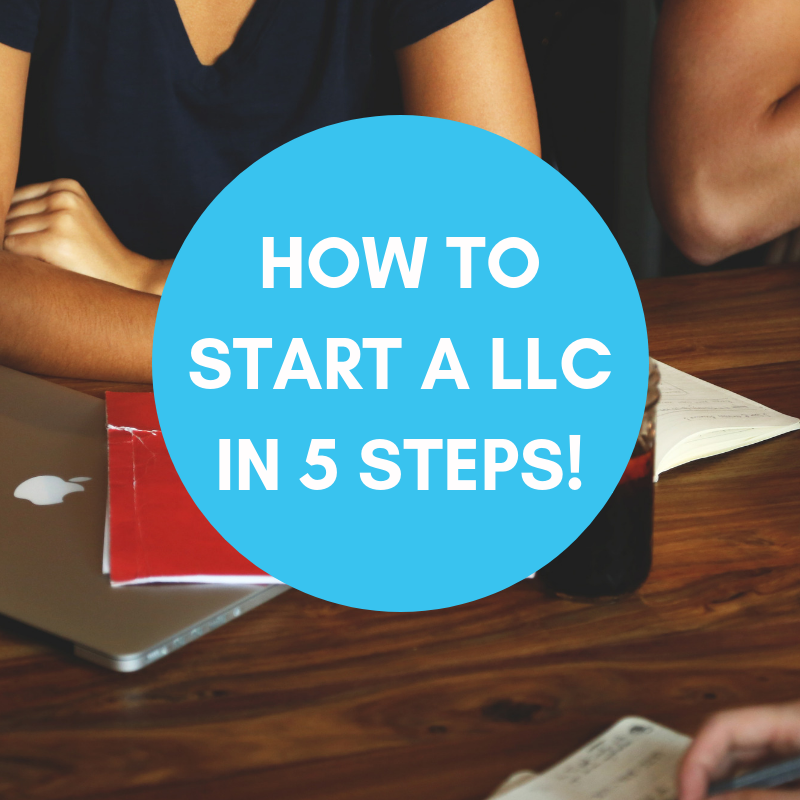

By Dwayne Duncan
Starting any business can be a daunting process, especially if it is your first business. There are many questions that need to be answered before actually set out to start the business. Questions like – Who will my business serve; will it be a product-based or service-based business; where will my business be located; will I use drop-ship or will I package my own product; what software will I use to track finances and expenses; and last, but not least, what kind of legal entity is need to ensure maximum success for my business.
In this article, we will discuss how to start a limited liability Company (“LLC”). First, what are the benefits a LLC? An LLC provides many benefits; however, the two most important benefits are limited legal liability and pass-through taxation. The very purpose of a LLC is to limit any potential liability to the company only. In other words, if someone sues your company, then only the assets of the company are on the table during a law suit. (Note: If you contracts have been drafted effectively by an attorney, only a small portion of the company’s assets should be on the table.) The golden rule for doing business is to never co-mingle your personal assets and your business assets. Co-mingle assets will, unfortunately, put your personal assets on the table during a law suit. The second benefit of an LLC is pass-through taxation. Unlike a corporation, which is a taxable entity, a LLC is not taxed on the company level. The taxable income is passed through to you and your employees on their personal income tax. In other words, the company is only taxed once.
Now that you have a quick overview of limited liability companies, let’s discuss how register your LLC:
STEP 1: CHOOSE THE NAME OF THE LLC – The first step to starting any company is always to choose the name. This is the fun part. What will be name of your business: “Baked by Melissa;” “The Body Shop;” “Apple?” It is important to find a name that speaks to your business. Unfortunately, the names listed above are already taken by very large companies. So, it is always important to check if the name that you want to use for your company is already taken in your state or well known on the larger national and/or international stage. For example, it probably would not be a good idea to name your company “Apple,” as it would be pretty hard for your customers to find you on the internet. Once you have decided on your company’s name, most states allow you to reserve the name. This step of reserving the name is optional. However, it provides you peace of mind if you intend to start your business at a later time.
STEP 2: FILE PAPERWORK WITH THE APPROPRIATE AGENCY –The second step is to file your paper work with your state’s appropriate agency. In New York and New Jersey, it is the Office of the Secretary of State. Almost all states have an electronic filing system that avoids the need to print the form and mail it. Also, your company is almost always immediately registered at the completion of the application. Using the mail will likely require a few days or weeks before the filing process is complete. When completing the form, you should know your business name, business address, taxpayer identification number (if available), registered agent and purpose of your business. There may be other questions to complete, these are the most important. Most states do not allow you to save the form and return at a later time to complete it; hence, you should be prepared to file to form in one shot. It is also important to have your credit card information handy to cover the fees associated to registering a LLC.
STEP 3: HAVE AN OPERATING AGREEMENT DRAFTED BY AN ATTORNEY – Another very important and often overlooked step is the creation and execution of an operating agreement. An operating agreement is the document that dictates the structure of your company. It is especially important for LLCs that have more than one member or intend to have more than one member. A LLC agreement is akin to a partnership agreement or corporate bylaws. It safeguards the interest of the company and the individual members. It allows all parties and, at times, the public to be in agreement with how the company will be run and what happens in the event of issues. The absence of a LLC agreement can mean the difference between you living your dream or forfeiting it to someone else. Finding a reputable and knowledgeable attorney to draft the LLC agreement is highly advisable.
STEP 4: ACQUIRE A FEDERAL EMPLOYER IDENTIFICATION NUMBER – The next step is to acquire your Employer Identification Number (“EIN”) or Taxpayer Identification Number (“TIN”). The process for acquiring an EIN is clear and straight forward. Check out the process here: https://lawdlf.com/3-simple-steps-to-acquire-an-ein/.
STEP 5: FILE NECESSARY TAX PAPERWORK WITH IRS AND STATE TAXATION DEPARTMENT – The final step to register your LLC is your taxation election. Both the state (Department of Taxation) and federal government (IRS) will require you to file additional documents to finalize the registration of your business. Check with your local taxation agency to determine, what, if any, documents are required. The IRS will require you to file a taxation election form. The form requires you to determine how your company should be taxed going forward. You can elect for you company to be taxed in several ways – a C corporation, sole-member disregarded entity, an S corporation, etc.). It is important to discuss your election with your attorney and accountant to ensure that are making the right decision for the long-term success of your business.
If you are in need of an expert legal advice for your coop purchase, please feel free to contact The Duncan Law Firm LLC at info@lawdlf.com.
Copyright 2019 – The Duncan Law Firm LLC. All Rights Reserved

